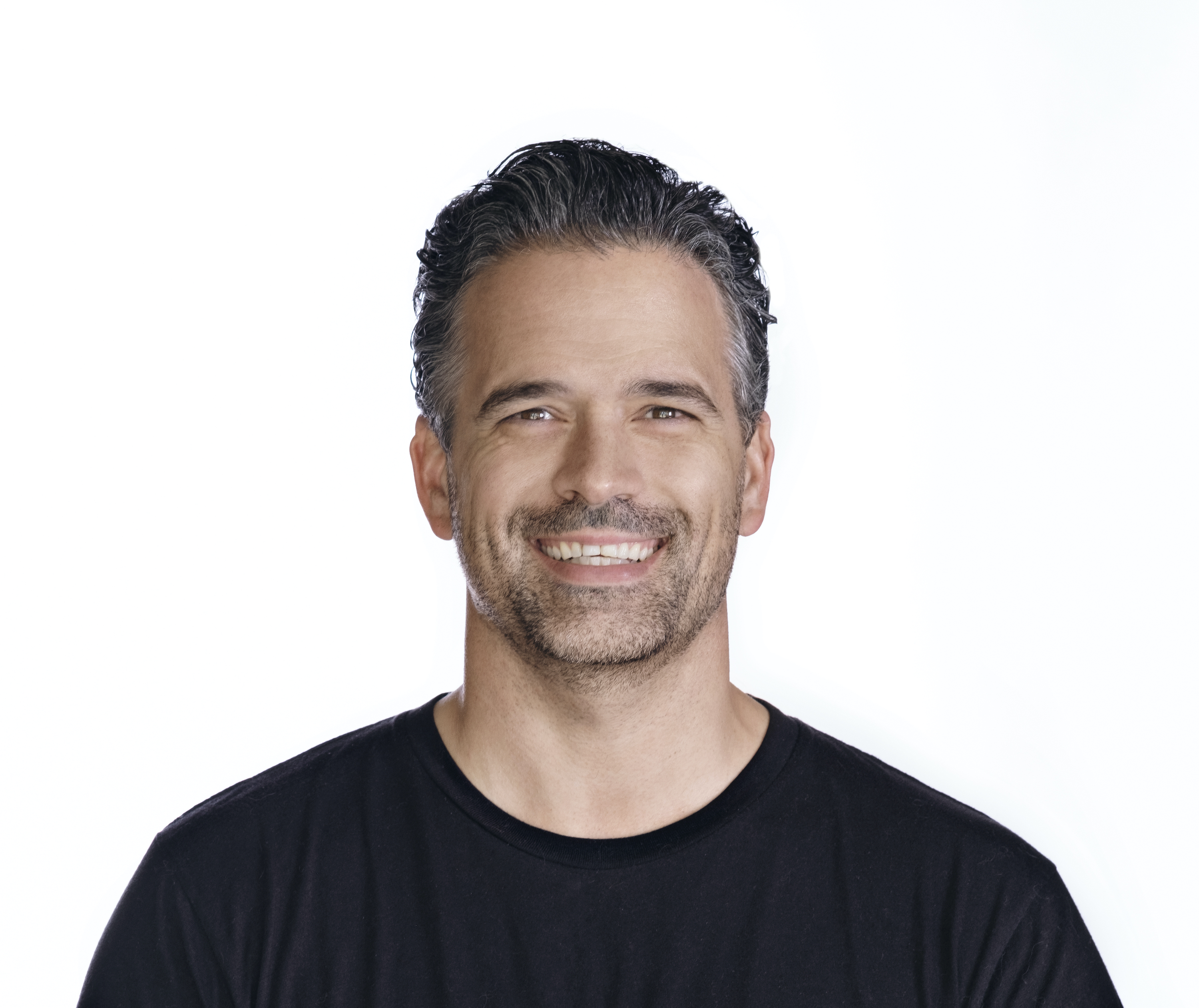Launching a B2B Podcast: 4 Secrets Behind 50,000 Downloads

Jesse Wisnewski

.jpeg)
Marketing
I accidentally launched a B2B podcast that exceeded 50,000 downloads in six months.
By accidentally, we didn't set out to make our podcast a priority.
It happened by publishing the episodes rather than actively promoting them.
Let me give you the backstory to make sense of all of this.
Previously, I served as the Marketing Director for Tithe.ly.
We launched a YouTube Channel called Modern Church Leader to complement our demand generation and content marketing efforts.
Since Tithe.ly provides digital giving solutions for Protestant churches, our goal of this show was to primarily target church leaders (e.g., Executive Pastors, Senior Pastors) with 500 or more in attendance.
To make this a success, most of our efforts went into getting this channel off the ground.
We …
- Hired a new team member
- Bought equipment
- Created an animated intro and outro
- Filmed one month of content ahead of time
- Positioned our team to produce and distribute it
Regarding our podcast, we extracted the audio from the videos to publish as podcast episodes. We also created a new intro and outro for these episodes and adapted the show description for the podcast. But honestly, the podcast was an afterthought.
We didn't actively promote the podcast on social media or include it in our email newsletter or other owned media.
The only thing we did at the time was to include a link on our landing page and in the individual blog show notes (here's one example). But it was never the main thing—the YouTube Channel was.
Now, fast forward six months after the launch, and this is what I saw in Libsyn (our podcast host):

To say we were pleasantly surprised is an understatement.
Per Libsyn, this amount of downloads placed our podcast in the top 1%.
If you're thinking this, these results weren't because one episode garnered 10,000 downloads.
Instead, this resulted from the downloads of individual episodes piling up.
I'm no longer at Tithe.ly today, so I can't speak about how well the podcast is doing.
But after reflecting on this experience, I'm going to share why I think this worked, and I'm also going to get into the fundamentals you need to master if you want to launch a B2B podcast.
But first, we have to get one thing out of the way.
What is a B2B podcast?
A B2B podcast is produced by a business to reach and engage its ideal customers (ICP). It can be one part of your overall B2B go-to-market strategy.
Depending on the B2B podcasting strategy you pursue will determine the goal of your podcast. It can generally range from building your brand and an audience, reaching your target audience and accounts (think ABM), positioning yourself as a thought leader, or even acquiring customers.
Usually, B2B podcasts consist of interviews and discussions with experts in a particular industry or niche. This is the easiest way to produce a B2B podcast. However, B2B podcasts are not confined to this format. They can also include a variety of forms, including:
- Documentary, such as Breaking Brand by Buffer
- Panel, such as B2B Growth by Sweet Fish
- Individual Subject Matter Experts, such as Revenue Vitals by Chris Walker
The format you pursue for your podcast doesn't matter as long as it's a good fit for your business objectives and you have the time, talent, and treasure (think money) to create a killer show and promote it well.
Also, some organizations, such as Sweet Fish and Fame, can produce a great B2B podcast for you, too.
Let's get into the nitty-gritty with that out of the way.
4 unexpected reasons why our B2B podcast blew up
Looking back, here are four reasons why I believe our B2B podcast did well:
- Produced daily weekday episodes
- New and easy-to-digest format
- Differentiated the show
- Leveraged different influencers
Let me explain these in more detail.
1. Produced daily weekday episodes
Producing daily weekday episodes was the biggest difference-maker.
This was a big selling point for Paul Maxwell–the team member we hired to launch our YouTube Channel and B2B podcast. And I believe he was spot on, too.
Here's the deal:
Podcast hosting platforms, like Apple and Spotify, are like search engines and favor frequent publication. In light of this knowledge, we chose to publish daily episodes. Not only to take advantage of what we perceived to be their algorithm. But also to differentiate us from our competitors.
Even though I can't confirm this, daily publishing boosted our podcast's discoverability in search rankings and recommendations within podcast platforms.
What is more, this commitment to daily episodes not only allowed us to stay top of mind with our listeners but also increased our chances of being discovered by new audiences actively seeking content.
To make daily publishing work, there were other essential ingredients to include, which leads me to the next point.
2. Easy-to-digest format
To make this production happen, we had to keep one thing in mind: the length of every podcast episode.
Here's why:
We were not a daily news station or sports talk show.
We were a B2B podcast targeting church leaders unfamiliar with a daily church podcast.
Since we opted for a daily show, our episodes ranged from 3 to 10 minutes and focused on one topic. By providing bite-sized episodes packed with valuable insights, we ensured our listeners could easily fit our content into their busy schedules.
For these daily episodes, we had to be mindful of the type of content we created, which led us to the next point.
3. Differentiated the show
Blending in is the first step toward oblivion for any B2B podcast.
When launching our show, we went to great lengths to ensure it was differentiated from the pack, so we went to great lengths in creating our content strategy.
We wanted to dive in and discuss topics relevant to our business and applicable to our target audience. Since the company provided software to solve various problems, such as digital giving for local churches, church management, church communication, and more–we were at liberty to discuss many topics.
Some of the topics we addressed were evergreen and always relevant, whereas on others, we took the lead in speaking into them and getting ahead of the curve (e.g., data hygiene for local churches).
This approach complemented the format (daily, short episodes) well and positioned the company as a thought leader.
4. Leveraged different influencers
The CEO of Tithe.ly, Dean Sweetman, and the COO, Frank Barry, served as the hosts of the show. Roughly, they were responsible for creating 60-70% of the episodes.
Paul and I contributed to some of the other episodes and different team members (Subject Matter Experts). But what turned out to work well was including different influencers.
To maintain our format (short and one topic), we'd provided guests with guided prompts ahead of time that focused on discussing one topic. This way, they could focus on one issue, and we could fit it within our overall theme.
This exposed us to their audiences and provided valuable insights and perspectives from different voices in the same industry. It also helped us establish relationships and collaborations with other thought leaders in our space, creating a network of industry experts and driving more credibility to our show.
Here are examples of what I'm talking about:
- Youth Pastor Turned COO
- The Dos and Don'ts of Growing Your Small Church
- 5 Personal Branding Strategies that Will Grow Your Church
- Critical Questions to Ask During a Pastoral Candidate Interview
These are the four unexpected reasons why our B2B podcast blew up.
However, these would not have worked if we didn’t have a solid foundation in place.
The Best Practices for B2B Podcasting
You may find some of the lessons above helpful.
But if you're considering launching a B2B podcast for your business, you must build a solid foundation. In other words, you have to nail the best practices.
Here's what I recommend:
- Define your primary goal
- Take the time to know your target audience in and out
- Plan the content of your episodes strategically
- Invest in high-quality production
- Promote your podcast effectively
- Encourage subscriptions and reviews
- Organize a successful launch
- Optimize each episode for maximum impact
- Implement a system to track and measure success
- Marketing implementation plan
These best practices are foundational.
By following them, you can ensure that your B2B podcast reaches and engages your target audience, establishes your business as a thought leader, and drives brand growth.
Remember to continuously analyze and adapt to the evolving landscape to stay ahead.
Launching your B2B podcast
A B2B podcast may be a great marketing channel for you to consider.
If you choose to go this route, I encourage you to push the limits, think outside of the box, and strive to create a podcast that’s set apart from everyone else in your industry.
Taking an unorthodox approach may accelerate your podcast’s reach and influence.
And I hope the four lessons above are a source of inspiration.












